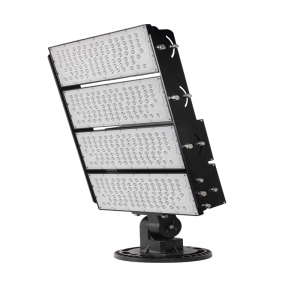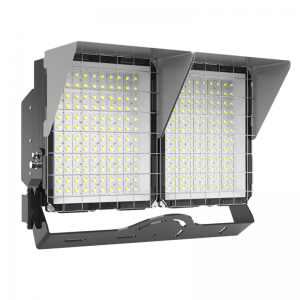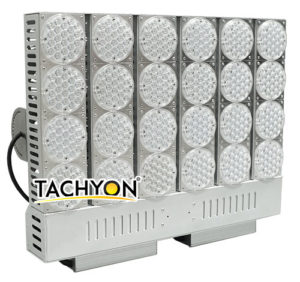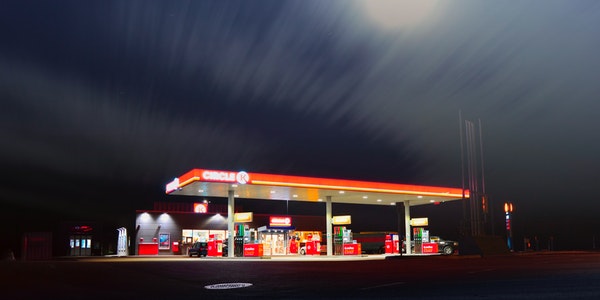Raising of the problem
Nowadays, as a new type of high brightness LED driver chip has been coming out in the market, which has a wide range of applications in lighting technology. In this paper, starting from the effect of energy saving and prolonging service life, it is a new trend to replace the low efficiency MR16 halogen lamp with high brightness LED. Then the application of the key technology high brightness LED driver chip is discussed. The key point of this paper is to analyze and introduce the characteristics and application technology of max16820 and zxsc310 new high brightness LED driver chip.
First of all, what is the defect of the traditional MR16 halogen lamp. Compared with LED high-power lamp, low-voltage halogen lamp has low efficiency, poor reliability and low life. The power consumption of common MR16 halogen lamps ranges from 10W to 50W, and the luminous flux ranges from 150 lumens (LM) to 800lm, which is equivalent to the efficiency of 15 lumens / W or 15% luminous efficiency. A typical ha logen bulb has a life of about 2000 hours. In addition, the filament may be damaged prematurely due to violent vibration.
Although MR16 lamp is widely used, many disadvantages of halogen lamp limit its application potential. Therefore, in recent years, as a substitute for low-voltage halogen lighting, LED lighting has become more common. In other words, white LED can replace the 10W halogen lamp in MR16, which overcomes the inherent defects of halogen lamp. Therefore, when considering LED lighting as a substitute for low-voltage halogen lighting, the most important thing is to consider which kind of high-power led to choose, and then use the new high brightness LED driver chip as the driver.
Selection of high power LED
It should be said that the current LED technology provides a halogen lamp alternative that is compatible with MR16, highly reliable and cost-effective. For example, the new generation of 5W (single chip, 4mm x 4mm package) and 10W (4 chips, 7mm x 7mm package) high-power LED of LedEngin company have a typical luminous efficiency of 45 lumens (LM) / W at current of 1000mA and junction temperature (TJ) + 120 ℃.
Under actual working conditions, 5W package is equivalent to 155 lumens of typical light output flux (current is 1000mA, junction temperature TJ = + 120 ℃), while 10W package provides 345 lumens of typical light output flux (current is 700mA, junction temperature TJ = + 120 ℃). When the LED produces the same brightness as the halogen lamp, the power consumption is reduced by about 50%. In addition, LedEngin is about to introduce led with 90% luminous efficiency (100khr, junction temperature TJ = + 120 ℃), which does not need to replace the bulb during the whole life of the product.
Characteristics and application of high brightness LED driver zxsc310
★Characteristics of zxsc310
Zxsc300 / 310 is a single cell or multi cell LED flash driver with an input voltage range of 0.8v-8v. It is compatible with single NiMH, NiCd or alkaline batteries. The main features are: 94% efficiency, low starting current and programmable output current; series or parallel LED configuration, low saturation current switch; main switch current is 4 μ a, bean static current is 200 μ a, package form is SOT23-5 package.
Zxsc310 applications: LCD backlight, digital still video camera, PDAs, cellular wireless telephone, LED flash and igniter, white LED driver and multi LED driver.

★Using zxsc310 LED driver to build a system alternative to low voltage halogen lighting
It is a novel approximation of high power LED driving,
Input VIN is 12V, led forward voltage drop VLED is 9.6V, VIN = VLED + VL, so VL = (12-9.6) = 2.4,
peak current VSENSE / R1 (R1 is RSENSE) = 34mv / 50MW = 680mA, Ton = ipeak X L1 / VL
TON=680mA X 2.2H/2.4V=6.2μs
It is considered that the forward voltage drop of LED is a fixed value in the process of current rising and falling along the diagonal, so the TON calculated by these equations is an approximate value. In fact, the forward voltage drop of the LED changes with the current. In the design and calculation, not only the tolerance of components used in the actual circuit, but also the change of forward voltage drop of LED should be considered. Similarly, compared with the above two differences, the difference between VIN and VLED is relatively small. Therefore, we must also consider these voltage factors when calculating the 6.2 μs TON period.
After understanding the above contents, we know that the voltage drop of LED is 9.6V and that of Schottky diode is 300mV. The calculation formula of the time required to decrease from 680mv to zero along the diagonal line is as follows:
TDIS = 680mV x 2.2 µH /(9.6+0.3)= 1.5 µs
the current can be reduced to zero in this period because of the 1.7 μ s period. However, the time between 1.5 μs and 1.7 μs is very close. Considering the tolerance of components, the coil current is likely not to be reduced to zero. But the residual current is small, which is not a big problem. After understanding the above content, and because of the scale of the peak current and the closing of the switch, it is impossible for the inductance to appear a dangerous state during the TON period of the converter.
The current will never exceed ipeak. Even if the current is given a limited value at the beginning (that is, in continuous mode), the current will not exceed ipeak. Therefore, the LED current is the approximate average value of 680mA and zero, that is 340mA (strictly speaking, the LED current is not the average value, because there is a period of 200ns when the current is zero, but compared with the tolerance of ipeak and components, the error ratio is lower).
12V system performance: if the resistance of R2 is changed from 1.2k Ω to 2.2k Ω, the input voltage range can be adjusted from 20V to 30V. Therefore, this solution can be used in low voltage lighting with general working voltage of 12V to 24V.
★Operation analysis
Start up period – TON
Zxsc310 turns Q1 on until its iSense pin voltage reaches 19mv (nominal). The maximum current reached by Q1 is 19mv / R1, which is called peak current iIPEAK. Suppose that there is a voltage drop VF when the current passes through the LED, and there will also be a voltage drop V (L1) when the remaining battery voltage passes through L1. This voltage can make the current passing through L1 increase slowly in the ratio of D / dt = V (L1) / L1. The unit of di / DR is ampere / second, the unit of V (L1) is volt, and the unit of L1 is Henry. The voltage drop through Q1 and R1 can be ignored. Q1 should have a relatively low RDS (in the on state), while the voltage drop of R1 is usually less than 19mv, which is the closing limit of Q1.
VIN = VF + V (L1)
TON = iPEAK x L1 / V (L1)
Because the voltage of L1 can be obtained from the forward voltage of VIN to LED, so we can calculate the start time of ton. Therefore, under the same peak current ipeak and the same battery input voltage (VIN), the smaller L1 is, the smaller ton is. When the inductance current slowly reaches ipeak, there is also current passing through the LED, so the average value of LED current is the average value of the sum of the current in the rising period of ton and the falling period of TOFF.
Closure period – TOFF
The TOFF period fixed in the internal zxsc310 is nominally 1.7 μS. if calculated according to the slope of current diagram 1 (b), the time limit is 1.2 μS. in order to reduce the conduction loss and switching loss, TON should not be much smaller than TOFF. It is suggested that zxsc310 should be used within 200kHz. Given a fixed toff of 1.7 μs, the time of TOB is (1.7 μ s to 5 μ s), and the total time is at least 3.3 μ S. however, this is not an absolute limit. These elements can work at 2 to 3 times of the above frequency, but under such conditions, the conversion efficiency will be reduced.
During the TOFF period, the inductor is storing energy. Except for a little energy loss on the Schottky diode, the inductor will provide the rest of the energy to the LED. The energy storage formula of inductor is as follows:
1/2 x L x IPEAK2
So when the input and output voltage difference is large, more energy will be converted from the inductor to led instead of directly from the power supply. Because the average current of LED is always close to ipeak / 2. If the inductance and peak current ipeak are calculated to 1.7 μ s, the LED power will not be affected by the power supply voltage.
As the supply voltage increases, TON decreases, while the power of LED will remain unchanged. Led draws current from 0 to peak ipeak by power supply in half cycle of TON.
Compared with the whole cycle, ton has a lower value at higher supply voltage, so the average supply current has a loss at higher supply voltage. If the stored efficiency and the voltage converted by efficiency pass through Schottky diode in the forward direction, for example, led VF is 6V and Schottky diode VF is 0.3V, then the energy loss converted by inductance is 5%. This ratio is determined by the forward voltage drop ratio of diode to LED VF. In the half cycle of ton, the diode does not work, because it will not cause loss. The percentage of total energy loss will be determined by ton Ratio to TOFF. When the power supply voltage is low, TON accounts for a large proportion in a cycle, and Schottky diodes have no loss. When the LED voltage is high (multiple LEDs are connected in series), the forward voltage drop of Schottky is also lower than that of high led voltage, so the loss is less.
Characteristics and application of high brightness LED driver max16820
★Features of max16820
Max16820 is a step-down constant current high brightness LED (HB LED) driver that provides cost-effective solutions for automotive interior / exterior lighting, architectural and environmental lighting, LED bulbs such as MR16 and other LED lighting applications.
The max16819 / max16820 operates in the input voltage range of 4.5V to 28V, with an output power of more than 25W and a 5V / 10m a on-chip voltage regulator. Special brightness adjustment control input, 20kHz maximum brightness adjustment frequency, hysteresis control, no compensation, switching frequency up to 2MHz, LED current accuracy ± 5%; adjustable constant LED power, output current regulated by high side current detection resistance, special PWM input (DIM) can achieve wide range of pulse brightness adjustment. Max16819 / max16820 can work in the automotive temperature range of – 40 ℃ to + 125 ℃, and can provide 3mm x 3mm x 0.8mm, 6-pin TDFN package.
The max16820 is ideal for applications requiring a wide input voltage range. High side current detection and built-in current setting circuit can minimize the number of external components and provide ± 5% precision LED current. In the process of load switching and PWM brightness adjustment, the hysteresis control algorithm ensures excellent input power suppression and fast response. Max16819 has 30% inductance ripple current, while max16820 has 10% ripple current. These devices can operate at switching frequencies up to 2MHz, allowing the use of small components.
★Using max16820led driver to build a system alternative to low voltage halogen lighting
In the MR16 led reference design, Maxim selects LedEngin’s 5W white LED (WLED) to demonstrate the 1000mA current driving capability of max16820. the components of 5W MR16 LED driving circuit are: D1 – D4 is rectifier diode, ~ 1N4001,C1 and C2 are 100 μ f / 20V tantalum capacitor, ~ 220 μ f / 25V electrolytic capacitor; C4 is 1 μ f / 25V ceramic capacitor, R1 is 0.2 Ω± 1% sense resistor, C3 is 1 μ f / 6.3V ceramic capacitor, Q1 is MOSFET fdn359bn, D5 is freewheel fbr130, U1 is max16820 driving circuit and L1 is 39 μ H / 1.2A step-down inductor.
The 5W MR16 LED driving circuit is constructed by max16820 LED driver. The LED is 5W WLED of LedEngin. Max16820 is designed for LED driver applications, especially MR16 based on LED. It is an ideal choice for MR16 LED circuit. The max16820 adopts an ultra small, 6-pin tdfn package and operates at an input voltage of 4.5V to 28V. It can drive an external high cost performance MOSFET to provide a wide range of LED current driving ability. Max16820 works in the automotive temperature range (– 40 ℃ to + 125 ℃), and can safely work in the high temperature environment of MR16 lamps. In addition, the max16820 can also provide up to 25W or more power, and its 2MHz (typical) switching frequency allows the use of small external inductors and capacitors, so that the drive circuit can be placed in the MR16 lamps.
5W high brightness LED (HB LED) needs 1A driving current. Buck LED driver design can provide 1A DC output current. The driver adopts hysteresis control scheme to control the current of Buck inductor and provide 1A current for LED. The hysteresis control of max16820 helps to build a simple, highly reliable driver with 5% LED current accuracy.
When 200 μf DC filter capacitor is used, the voltage ripple of DC power bus is 8.5V. The hysteresis control mode based on max16820 has a good power supply regulation rate. Because the input bus voltage ripple is very small, the change of output LED current is reduced. For 5W ﹣ MR16 ﹣ LED driver, the test results show that the ripple and variation of AC input voltage will exceed 8.5V, but the output LED current is still stable at 1a. The PCB of MR16 lamp driver has two layers. All components and two AC input connection pads and two DC output connection pads (marked as LED + and led -) are placed in the top layer.
On the PCB screen printing layer (top layer and bottom layer) of 5W ﹣ MR16 ﹣ LED lamp driver, the connection pad led + and led – of DC output can be seen.


